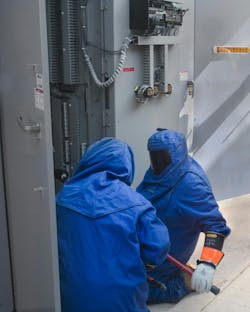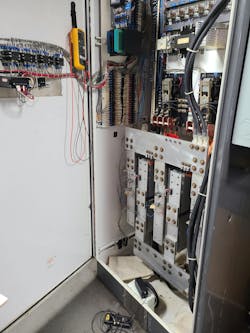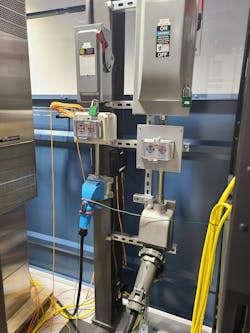10 Questions Every Electrical Worker Should Know How to Answer
The most effective tool in electrical safety is knowledge — not only knowledge of the hazards but also knowledge of how to protect ourselves and others from those hazards. Throughout my career, I have had the pleasure of visiting many different locations/facilities and talking with electrical professionals about numerous electrical safety concerns. After all of these years, I still find it interesting just how many times electrical workers — all of whom come from various backgrounds, levels of experience, and job roles — continue to ask many of the same questions over and over. Following are a few of the common questions and answers per the current 2024 edition of NFPA 70E, Standard for Electrical Safety in the Workplace.
Before jumping into the Q&A items, keep in mind that every task that could involve an electrical hazard, shock, or arc flash requires you to perform a risk assessment. The electric shock risk assessment requirements are covered in Sec. 130.4 of NFPA 70E, and the arc flash risk assessment requirements are covered in Sec. 130.5. An important habit every electrical worker should develop is to ask one important question immediately upon being assigned any new task: Will this task potentially involve exposure to an electrical hazard?
The goal for electrical workers is to perform all of their work on equipment that is in an electrically safe work condition as defined in Art. 120. However, keep in mind that sometimes the steps required to establish an electrically safe work condition can involve potential electrical hazards. So let’s dive into the top 10 most common questions.
1. When do I have to wear voltage-rated gloves?
Voltage-rated gloves (or insulating gloves) are required any time your hands — or anything you are holding (tools, test probes, etc.) — enter the restricted approach boundary of any exposed conductor rated at 50V or greater. The boundary size of the restricted approach boundary is directly related to the nominal voltage of the circuit or circuit part that is exposed. The distances for various voltages are found in Table 130.4(E)(a) for AC systems and Table 130.4(E)(b) for DC systems.
2. When do I have to wear arc flash PPE?
Arc flash PPE is required any time you’re inside the arc flash boundary. Any part of the body that is inside this boundary must be protected. According to Sec. 130.5(E), the arc flash boundary is the distance at which the incident energy equals 1.2 cal/cm2. The boundary distance can either be calculated or determined by Table 130.7(C)(15)(a) or Table 130.7(C)(15)(b) when the requirements of those tables apply.
3. When do I need an energized electrical work permit (EEWP)?
Per Sec. 130.2, an energized electrical work permit (EEWP) is required when performing work within the restricted approach boundary of equipment that is not in an electrically safe work condition or when interacting with electrical equipment without any exposed circuits or circuit parts (but the task has an increased likelihood of injury from an arc flash event). An example of a task that could require an EEWP due to a potential increased likelihood of an arc flash event might be racking a breaker on/off an energized bus.
A critical aspect of electrical safety is the requirement that employers implement a policy that requires hazard elimination to be the priority in safety-related work practices [Sec. 110.2(A)]. This hazard elimination is achieved through establishing an electrically safe work condition whenever it is feasible to do so (Art. 120).
There are eight steps to establishing an electrically safe work condition.
- Determine all possible sources of electrical energy.
- Open the disconnecting device(s) for those sources.
- When possible, visually verify the disconnects are open.
- Release any stored electrical energy.
- Release or block any stored nonelectrical energy.
- Apply lockout/tagout devices.
- Verify the absence of voltage using the live-dead-live method.
- Apply temporary protective grounds.
When these eight steps are implemented, there is no electrical hazard exposure for the worker; therefore, an EEWP is not needed for the remaining tasks. Remember that the opening of disconnect devices and verifying the absence of voltage can involve electrical hazard exposure that would require personal protective equipment (PPE) to perform those tasks safely.
4. Do I need to wear voltage-rated gloves when using a digital multimeter (DMM)?
The context of this question is typically related to 120VAC nominal circuits. NFPA 70E defines “Working On (energized electrical conductors or circuit parts)” as “intentionally coming in contact with energized conductors or circuit parts with the hands, feet, or other body parts, with tools, probes, or with test equipment, regardless of the personal protective equipment (PPE) a person is wearing.”
NFPA 70E Sec. 130.4(G) states that any part of a qualified person’s body that crosses into the restricted approach boundary shall be insulated. Therefore, holding test probes that are in contact with the energized or potentially energized conductors is equivalent to contacting those energized conductors with your hands.
As per Sec. 130.7(C)(7)(a), “Employees shall wear rubber insulating gloves with protectors where there is a danger of hand injury from electric shock due to contact with energized electrical conductors or circuit parts.” If the qualified person’s hands, tools, probes, or test equipment cross into the restricted approach boundary of systems rated 50V or greater (AC or DC), then the use of voltage-rated gloves is required. This includes using a handheld meter to check voltages on 120VAC circuits.
5. If the enclosure doors are closed, will this protect me from an arc flash?
This question is becoming less common than it used to be, but I still run across workers who believe if the breaker enclosure door is closed there is no need for arc flash PPE when operating a breaker. The only time that it is safe to operate a circuit breaker with no arc flash PPE on is if the risk assessment verifies there is no arc flash hazard — or the equipment is arc-rated, installed, and operated per the manufacturer’s instructions.
If the risk assessment verifies that there is an arc flash hazard potential, then the appropriate level of PPE must be worn to operate the breaker. Not only do the breaker enclosures have vents that will allow the super-heated air and gasses out of the enclosure, but arc flash events have also been shown to blow doors open, melt through metal barriers, and even strip bolts out of their holes to allow the pressure wave to escape — not to mention the common practice of only tightening enough of the latches/bolts to hold the enclosure/panel in place so that it is easier to remove on the next maintenance cycle, which is not an acceptable practice.
6. Do I need arc flash PPE if I am only operating electrical equipment?
This is very closely related to the last question. The difference is that the context of the previous question is someone who recognizes the potential for an arc flash hazard but has been led to believe that having the enclosure doors or panels closed will be able to contain the hazard. The context of this question usually relates to someone who doesn’t even really recognize the potential for an arc flash hazard. These are often operations personnel who are just simply turning 480VAC breakers on and off as part of their operations procedures. They aren’t opening any enclosures, exposing any conductors, or doing any maintenance, so they see this task as normal and not hazardous. However, as previously mentioned, the only time that it is safe to operate a circuit breaker with no arc flash PPE on is if the risk assessment verifies there is no arc flash hazard or the equipment is arc-rated, installed, and operated per the manufacturer’s instructions. If the risk assessment verifies that there is an arc flash hazard potential, then the appropriate level of PPE must be worn to operate the breaker.
7. When do I need to use voltage-rated tools?
Voltage-rated tools are required to be used when working inside the restricted approach boundary of conductors that are not in an electrically safe work condition. Working inside the restricted approach boundary for non-diagnostic tasks also requires an EEWP. A task that would require voltage-rated tools also requires an EEWP, meaning that the worker should have an approved EEWP before performing any task that requires the use of voltage-rated tools. If the EEWP and hazard risk assessment process results in verifying that the task is infeasible to complete in an electrically safe work condition, then any work performed inside the restricted approach boundary requires tools that are properly rated and insulated to the correct nominal voltage.
8. If equipment has no power coming to it, is it safe to work on/around exposed conductors with no PPE?
This question is typically a result of a lack of understanding of what steps are required to make electrical equipment safe. It is common to think that if you are within line-of-sight of a disconnect switch — and the switch is in the “open” position — then it must be safe to work on the downstream circuits. However, the only thing known when seeing a disconnect switch with the handle in the open/off position is that the handle has been moved to the open/off position. There is no guarantee what happened inside that switch enclosure. There have been plenty of incidents of mechanical failure inside the switch enclosure that resulted in one or more phases remaining connected when the handle has been moved to the open position.
Even if you disregard the probability of a component failure, typically when you begin to work on a task, a certain level of tunnel vision comes into play as you focus on what you’re doing. Someone may come along and have a reason to close that disconnect switch not realizing that someone is working on downstream equipment. Since you are focused on the task at hand, you may not recognize their move to close the switch in time to stop them or get out of any shock or arc flash boundaries before the circuit or circuit parts become energized. Just turning off the power does not make a circuit or circuit part safe.
The only approved means for establishing a scenario where no electrical PPE is required when interacting with circuits or circuit parts is to establish an electrically safe condition. It is essential that every electrical professional is proficient in this area. Review the answer in Question 3 to ensure you clearly understand the eight steps required in establishing an electrically safe work condition. Only after these steps have been taken can an exposed circuit or circuit part be considered safe to work on or around without the need for electrical PPE.
9. When are two qualified electrical workers required to complete a task?
There is no strict requirement in NFPA 70E for the use of a second qualified electrical worker to be present for specific tasks. However, the standard does require that a risk assessment be performed to identify potential exposure to electrical hazards. One of the required elements of the risk assessment is implementing risk control per the hierarchy of risk control methods as found in Sec. 110.3(H). In an Informational Note following this requirement, the standard states “The risk assessment procedure could include identifying when a second person could be required and the training and equipment that person should have.”
It is often considered a best practice to require a minimum of two qualified electrical workers for any task that requires an EEWP as a minimum. The second qualified electrical worker not only can serve as an on-site first responder in the event of something going wrong, but, more importantly, they can also potentially help avoid something going wrong. Anyone who has worn arc flash PPE can attest to the fact that the PPE on some level limits visibility during the task. The second qualified electrical worker can be an additional set of eyes to help alert the first worker if their arms or other body parts or tools may be getting too close to energized conductors. The second qualified electrical worker is also another perspective that can engage in discussion on how to most effectively and safely accomplish the task.
10. Can I layer two 20 cal/cm2 suits to achieve 40cal/cm2 protection?
Layering, concerning arc flash clothing ratings, is the idea of adding additional layers to increase the overall rating of the PPE as a whole. NFPA 70E uses the language of “layered system” or “clothing system” in the body of the standard. Informative Annex M, while not part of the requirements, provides some understanding of what is intended by using the word system in the context of layering. The Annex states, “Layering of arc-rated clothing is an effective approach to achieving the required arc rating when the layers have been tested together to determine the composite rating.” The only way to be certain that layers will increase the overall rating is if the layers were designed and tested to work together in a layered system.
If a worker is wearing 8 cal/cm2 pants, an 8 cal/cm2 undershirt, and a 12 cal/cm2 long-sleeve shirt (along with other required hand, foot, head, face, eye, and hearing protection), then the maximum arc flash energy the worker should be potentially exposed to would be 8 cal/cm2. The undershirt and long-sleeve shirt could not add up to 20 cal/cm2, and the exposure could not exceed 8 cal/cm2 because that is the maximum rating for which the whole body is protected due to the pants only being rated for 8 cal/cm2.
In summary
When it comes to electrical safety, two foundational principles can help us reach the safe work practices needed to protect ourselves and our coworkers. The first is that electrical workers should always prioritize only working on circuits or circuit parts that are in an electrically safe work condition. The second is that if creating an electrically safe work condition is infeasible, then any part of the body, tool, or test equipment that crosses a shock or arc flash boundary must be insulated or protected from the potential hazard. Maintaining a focus on these two critical areas during the planning of all electrical tasks will significantly reduce the risk of worker exposure to electrical hazards and will help the worker reach the correct answer to any electrical safety-related questions.
About the Author

Tommy Northcott
Senior Power Engineer
Northcott earned a BS Degree in Electrical Engineering with an emphasis in Power Systems from Tennessee Technological University. He is a Professional Engineer licensed in the State of Tennessee, a Certified Reliability Leader, and a Certified Maintenance and Reliability Professional and is a current principle member on the NFPA 70B committee (Recommended Practice for Electrical Equipment Maintenance). Tommy has broad experience working with large electric utility systems as a Systems Engineer, Arc Flash Program Manager, Operations and Maintenance Manager, and Reliability Engineering Manager. Tommy has extensive experience in operations and maintenance of electrical equipment, performing arc flash analysis calculations, developing and conducting electrical safety training and developing company electrical safety standards to ensure OSHA and NFPA 70E compliance. Currently, Tommy is a Senior Power Engineer with Jacobs Technology Inc.




